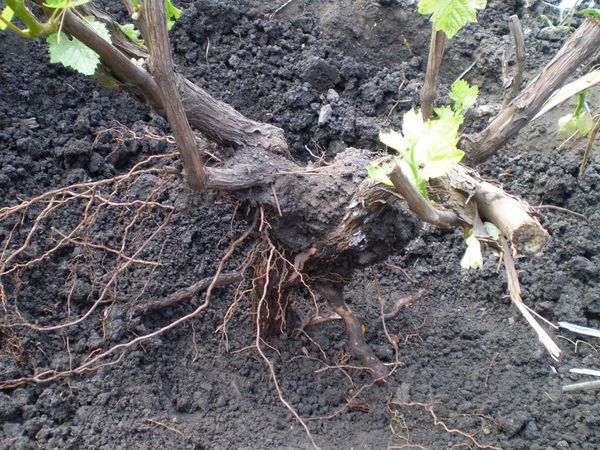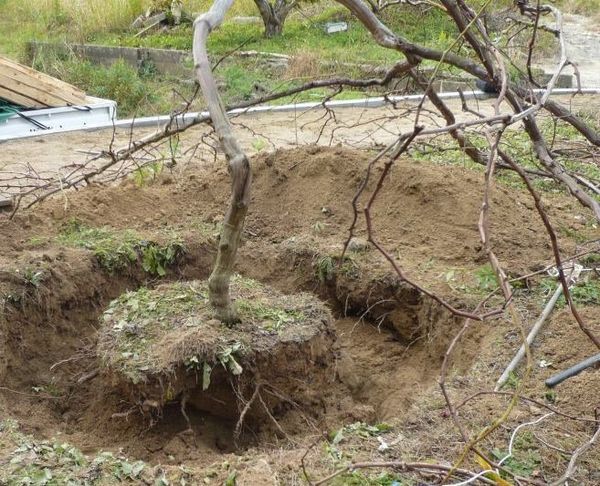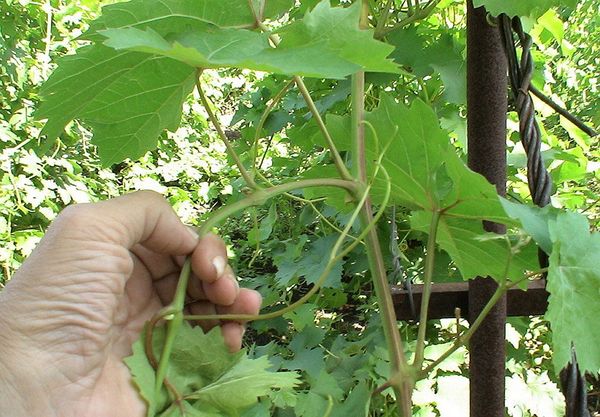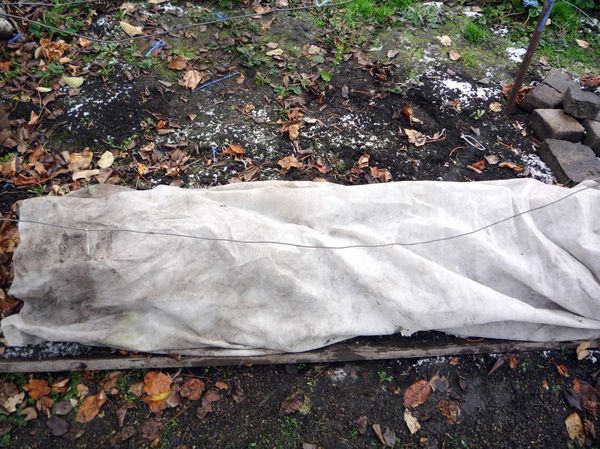Grapes are famous not only for their amazing taste of fruits, but also for their beneficial properties for the body. Therefore, gardeners are happy to grow this crop in their backyards. At first glance, grapes are an unpretentious crop, but a number of questions arise in the process of growing. Including how to transplant grapes to another place and do it in spring, autumn or in summer.
Table of contents
What bushes need to be transplanted
In the beginning, you need to figure out which plants will best tolerate the transplant. In the bushes, age over 7 years old fairly powerful root system.
Digging up an adult can accidentally damage the roots, which will lead to the fact that in the new section it will take root for a very long time, since the roots of adult bushes are being renewed very slowly. In the event of an imbalance of the root system with the aerial part, the fruiting will sharply deteriorate.
Based on this, we can conclude that you need to replant young bushes. Age must be less than 7 years. Experienced winegrowers against grape transplantation, as there is a high risk of filing phylloxera. However, if transplantation is unavoidable, then the most suitable time for this is autumn.

Causes grapes transplanted to another location
There can be several reasons:
- For the first time, planting grapes on a plot, beginners do not always take into account the characteristics of the variety being planted, the growing conditions, but also the choice of location and the quality of the soil.After planting, it may become clear that the ground was not suitable, or the site is poorly lit and located on the blown place;
- The presence of a number of trees or shrubs that will shade the vineand compete with it for nutrients coming to the roots from the soil;
- Failure of distance between the bushes and rows. In this case, the plants will have poor access to light and air, which can lead to the development of fungal diseases;
- Availability for grapes more convenient place of growth, or more fertile soil.
Benefits of transplanting in the fall
The advantages of the autumn transplant are:
- variety of varieties;
- sufficient soil moisture in this period. Irrigation is much easier;
- winter in the southern regions is much milder and the earth does not freeze deeply, which allows the root system to grow new roots.

Proper preparation of an adult bush for replanting
To successfully transplant a bush you must:
- Save the root, heel and part of the trunk from the root collar to the first skeletal branch;
- Cut off the vine with a pruner 25 cm from the surface of the earth. The long processes are removed, leaving only the short ones.
- Digging around around the shovel. This should be done very carefully, so as not to damage the roots, pry and pull the bush along with a clod of earth;
- Shrub the roots with a dip in the manure and clay solution. To prepare this solution, it is necessary to mix one part of clay with two parts of manure, pour in water and mix thoroughly. The mixture should be like thick sour cream. Dip roots for 10 minutes in this solution, and lay out next to the pit.
Preparation of the landing pit at the new site
For grapes transplanting a landing pit is prepared in two months. This is done so that at the time of planting the land has time to settle, otherwise the roots of the precipitation of the earth may be too deep. From the proper preparation of the soil will depend on the duration of the adaptation of the bush in a new place.
Planting technology:
- pit must be in diameter 50 cm and deep 1 meter;
- one bush is planted in the landing pit;
- distance between each seedling not less than 2 metersbetween rows 2.5 meters;
- at the bottom there must be a drainage layer. For this, a layer of expanded clay is poured at the bottom;
- the next layer of nutrient - the soil is mixed with wood ash, add humus and superphosphate;
- on the grapes dug out they remove the processes, leave three sleeves with replacement knots, on which there will be two peepholes. This applies only to shrubs with well developed roots. For bushes with weak roots cut all above-ground shoots. For deep occurrence of roots, dew roots are removed.
- lower the seedling into the pit, straighten the roots, fill the pit with soil and gently tamp. The hole is well watered and wait until all the moisture is absorbed, the soil is filled up to the top so that processes and four eyes are not covered.
- watering exercise no more than once every 7 days.
- in order for the grapes to get acclimatized, it is recommended to pour a handful of barley in the hole to the roots.
- if there is a shortage of iron in the ground, you can bury metal objects, baked on the fire;
- no need to trim the transplanted bushes;
- after a year from the time of transplantation it is necessary to remove all the ovaries, for the second year 1/3 part is removed.This is done so that he can adapt more quickly.
- watering stop in 3 days before transplanting.
How can grapes be transplanted
Repot grapes not recommended for old habitat. If it is not possible to find another place for transplantation, the soil from the old pit must be replaced completely.
There are two ways to transplant:
- with a lump of earth;
- with bare roots.

Repotting with a lump of earth performed as follows:
- Perform pruning of grapes, leaving only two sleeves;
- On each sleeve must be left. two escapes;
- Carefully dig around the bush, pull out with a clod of earth and trim the lowest roots;
- Transfer it to a prepared pit. The depth of landing should be 10 cm lower than the previous time.
- The pit is filled up, the ground is compacted and the seedling is watered with two buckets of water.
Grape transplantation with bare roots carried out in the following order:
- Perform pruning, leaving two or four sleeves;
- On the sleeves left two escapes with three buds on each;
- Carefully dig a shrub around to avoid damaging the root system;
- Remove the lower roots;
- The grapes are transferred and buried in a hole 20 cm below the previous level of planting, the earth is compacted;
- Pit fall asleep to the top and poured two buckets of water.
If manure is not available, the clay can be mixed with a 1% solution of manganese. With the right transplant, recovery takes place throughout the year. Fruiting bush will start in the second year since the transplant.

When transplanting a bush with bare roots, you must observe the following nuances:
- It is necessary to inspect the roots for integrity, damaged immediately removed;
- Remove the bottom roots that will be buried in 20 centimeters;
- Slices to process the mud-clay solution;
- Leave when transplanting need two sleeves with two kidneys;
- Put a mound of earth at the bottom of the pit, so that when transplanting the roots settle down, taking the mound around;
- Pit to fill the ground, seal, pour and mulch;
- Bush do not cut, inflorescences remove completely.
Bush care
After moving to a new place, the grapes require some care to adapt:
- After transplant watering is temporarily stopped, thus give him the opportunity to get used to a new place;
- Prophylactic treatment for pests and diseases is needed;
- Complementary fertilizing with mineral fertilizers;
- Replaced shrubs required warmed for the winter.
Shelter transplanted vine for the winter can be done with a plastic bottle. To do this, in a plastic bottle with a capacity of 6 liters, cut off the bottom, and put it on the grapes, sprinkle it on top with a primer. Be sure to perform watering. Water consumption for each at least 1 bucket.

Errors
When transplanting inexperienced winegrowers make a number of mistakes that negatively affect the survival rate of the plant:
- damage root system;
- held poor quality pruning. Left a large number of roots and vines;
- inflorescences were not removed and the bush began to bear fruit early;
- The transplant is made sooner or later than the allowed deadlines.
Transplanting grapes to a new place, listen to the advice of experienced winegrowers,follow all the recommendations and at the new place the grapes will surely please you with a rich harvest!
